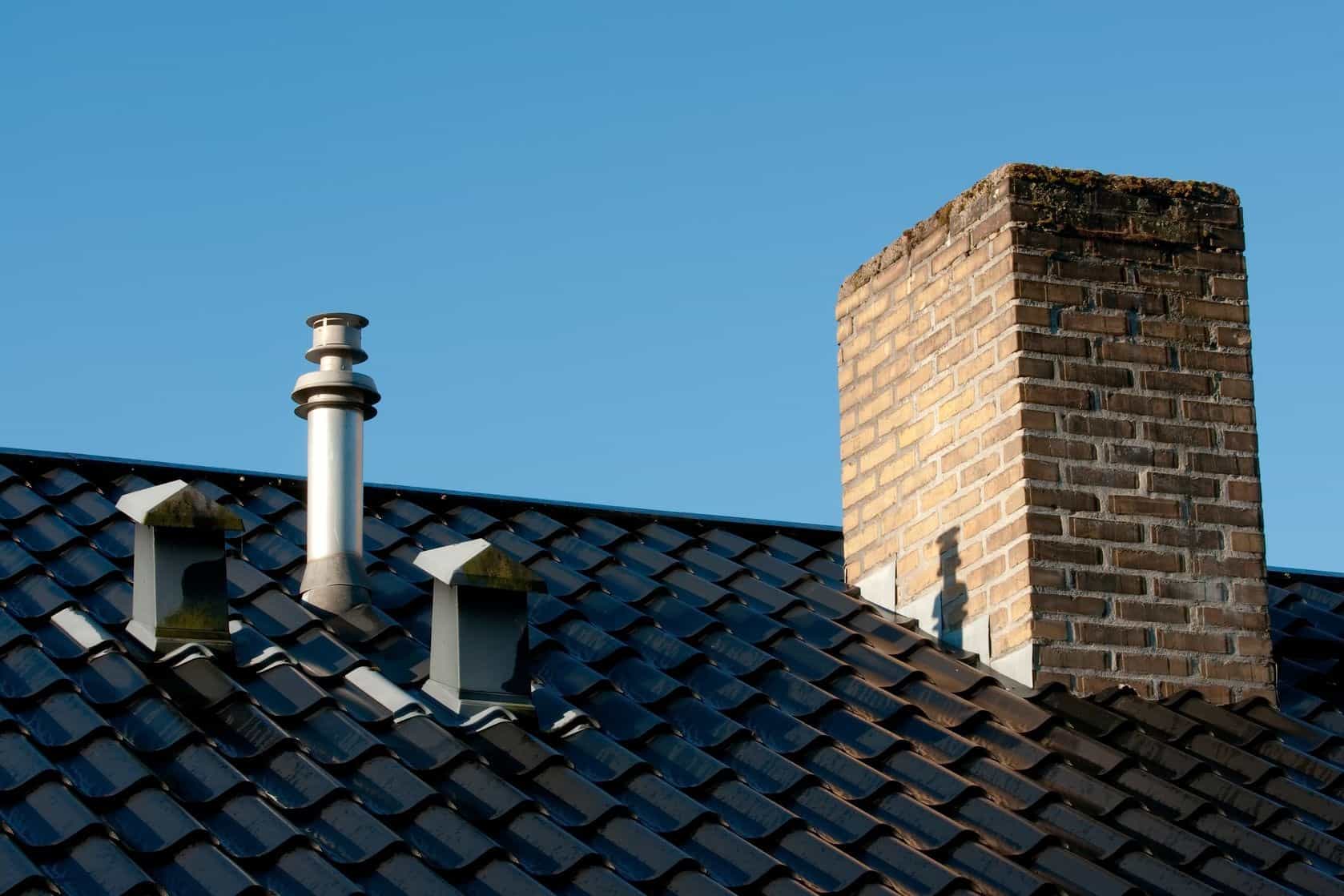The Reason Why Proper Ventilation is Key in Plumbing Systems
The Reason Why Proper Ventilation is Key in Plumbing Systems
Blog Article
What are your concepts about Essential Plumbing Vent Pipes: Understanding Their Role?

Correct ventilation in pipes systems is commonly neglected, yet it is critical for maintaining the capability and safety of your home's plumbing. Air flow helps control atmospheric pressure, prevent the accumulation of dangerous gases, and ensure the effective removal of waste. In this overview, we will certainly discover the significance of proper plumbing ventilation, just how it works, and the advantages it brings to your pipes system.
Recognizing Ventilation in Pipes
Ventilation in plumbing describes the network of pipes that enable air to move through the drainage system. These vents serve numerous purposes, consisting of controling atmospheric pressure within the pipelines, avoiding drain gases from going into the home, and assisting in the smooth circulation of wastewater.
Just How Air Flow Functions in Plumbing Systems
Atmospheric Pressure Guideline
Proper air flow preserves balanced atmospheric pressure within the plumbing system. When water moves with pipelines, it displaces air. Without appropriate air flow, this displacement can develop unfavorable stress, resulting in reduce drains or siphoning of water from catches, which can cause unpleasant smells to permeate into the home.
Protecting Against Sewer Gas Build-up
Among the most crucial functions of pipes vents is to avoid sewer gases, such as methane and hydrogen sulfide, from gathering within the home. These gases can present major wellness dangers and are highly combustible. Vent pipes allow these gases to get away safely outside.
Assisting in Waste Removal
Ventilation helps in the effective removal of wastewater by stopping airlocks in the drain system. When air can stream easily through the vents, it allows water and waste to move efficiently with the pipes, reducing the threat of obstructions and backups.
Types of Pipes Vents
Key Stack Vent
The major pile vent, additionally referred to as the vent pile, is the main air vent in a plumbing system. It prolongs from the primary drainpipe align via the roof, allowing gases to escape and fresh air to enter the system.
Branch Vent
Branch vents connect to the main stack vent and serve specific components, such as sinks, bathrooms, and showers. These vents guarantee that each fixture has adequate ventilation to function properly.
Air Admittance Shutoff (AAV).
An Air Admittance Shutoff (AAV) is a one-way valve that allows air to enter the pipes system without the demand for a standard vent pipe expanding with the roofing system. AAVs are typically made use of in improvements or areas where mounting a common vent is not practical.
Indications of Poor Air Flow in Plumbing.
Slow Draining Fixtures.
If your sinks, bathtubs, or toilets are draining pipes slowly, maybe a sign of bad air flow. Inadequate air circulation can create a vacuum result, making it difficult for water to drain effectively.
Gurgling Sounds.
Gurgling noises originating from drains pipes are frequently an outcome of air being drawn via water traps due to unfavorable stress in the pipelines. This is a clear indicator of not enough air flow.
Unpleasant Smells.
Sewage system smells inside your home are a red flag that your plumbing system is not effectively aerated. This might indicate that sewer gases are not being sufficiently vented outside, bring about possibly dangerous problems.
Typical Ventilation Mistakes.
Poor Vent Sizing.
Using small vent pipelines can result in inadequate air flow and stress discrepancies in the system. It's necessary to utilize vents that fulfill the details needs of your pipes system.
Improper Vent Positioning.
Putting vents as well far from the fixtures they serve can lower their performance. Correct positioning makes sure that air can stream freely and efficiently via the system.
Ignoring Code Needs.
Building ordinance supply specific standards for plumbing air flow. Disregarding these codes can lead to a system that stops working to function properly and may result in expensive repairs or health hazards.
Benefits of Appropriate Air Flow.
Boosted System Performance.
Appropriately ventilated pipes systems run much more successfully, with fewer blockages, faster draining pipes, and less pressure on the pipes. This performance prolongs the life-span of the pipes system.
Improved Air Quality.
By avoiding sewer gases from entering your home, proper air flow adds to much better indoor air quality, making your living setting healthier and a lot more comfortable.
Avoiding Water Damages.
Adequate ventilation helps protect against water from being siphoned out of traps, which can lead to drain gases going into the home and causing water damage with time.
Actions to Guarantee Proper Air Flow.
Consulting Pipes Codes.
Constantly get in touch with local pipes codes when creating or changing your pipes system. These codes give the required guidelines for correct airing vent and ensure your system meets security criteria.
Regular Assessment and Maintenance.
Normal examinations can assist determine prospective air flow issues before they come to be major problems. Upkeep jobs, such as cleaning air vent pipelines and checking for clogs, are essential for maintaining the system in good working order.
Expert Installation.
For brand-new setups or significant modifications, it's important to employ a specialist plumbing. They have the know-how to make certain the ventilation system is correctly created and set up according to code.
Verdict.
Appropriate air flow is a vital part of any type of plumbing system, making sure that it functions efficiently and safely. By understanding the value of air flow, recognizing the signs of poor air flow, and taking actions to preserve your system, you can prevent expensive problems and protect your home's air top quality.
4 Things You Should Know About Your Plumbing Vents
What Plumbing Vents Are
Also called a vent stack, a plumbing vent is a vertical pipe attached to your drain line that runs through your roof. The plumbing vent pipe, or plumbing air vent, removes gas and odors from your plumbing system and allows fresh air to enter the pipes, helping the water to flow out of the drain pipes.
What Plumbing Vents Do
Plumbing vents have two basic functions. One of which is to allow unpleasant smelling wastewater and sewer gasses to escape your plumbing system instead of entering your home. Plumbing vent pipes are typically located on roofs, away from windows, to ensure the fumes exit the home completely.
The other function of the plumbing vent is to move fresh air into your plumbing system. This helps move water through every plumbing fixture in your house, like toilets and sink drains. Think of the way in which you need to let a little air into the bottle as you pour soda in order to make the drink flow smoothly.
Different Types of Plumbing Vents
True vent: This is the most common vent option. In simplest terms, a true vent is a vertical pipe attached to your drain line that exits through the roof. They often function as the main vent that other fixtures can connect to. Re-vent pipe or auxiliary vent: Attached to the drain line near specific plumbing fixtures, re-vent pipes run up and over to connect to the main vent. Common vent: Two plumbing fixtures installed on opposite sides of a wall are typically tied into the vent stack using something known as a sanitary cross. Wet vent: This venting option operates as a drain pipe and a vent at the same time. Wet vent drainage systems drain water from one fixture while venting the air from another. Although they’ve been used for over 100 years, wet vent systems have only recently been added to the plumbing code in many areas. If you’re planning on installing one in a bathroom remodel, make sure you check your local code prior to construction. Loop vent: For free-standing fixtures like kitchen island sinks, loop vents are ideal. These vent pipes run under the floor, rise from the P-trap, and create a loop inside the cabinet sink. Air admittance valve: An AAV is a one-way mechanical valve typically installed at the site of the plumbing fixture. AAVs allow venting to occur without having to tie into a larger venting system. They’re ideal for venting fixtures where you aren’t able to easily connect to an existing vent system. Common Plumbing Vent Issues
Although vent pipes typically don’t have water flowing through them, they’re still subject to many typical plumbing issues. For example, clogs are one of the most common problems associated with sewer vent pipes. If your vent pipe gets clogged, all of your plumbing fixtures tied into the vent stack will be affected.
A sink with a slow drain that bubbles and gurgles or a strong sewage smell around your toilet are both indicators that your toilet vent pipe is clogged. Because most vent pipes exit through the roof, old leaves, twigs or even a bird’s nest could be clogging the pipe.
Clogs in your vent pipe system cause a buildup of negative pressure, meaning that water won’t be able to flow out of your home very well. It’s similar to putting your finger over the opening of a straw to trap water inside. When you remove your finger, the water is able to flow out of the straw.
If you suspect you have any blockage in your vent, make sure you have a professional come examine the situation. Left unchecked, a blocked air vent can lead to other costly repairs, like leaks and sediment buildup.
Under Pressure
Pipe vents are essential aspects of a home’s plumbing system. Owning a home means learning about all sorts of things you never put much thought into before. But by understanding as much as you can about the important systems of your home, you can keep those budgets intact and those anxiety levels low.
https://www.homeserve.com/en-us/blog/home-improvement/plumbing-vents/

Do you like reading up on ? Create a remark below. We will be glad to listen to your opinion about this post. We hope that you come back again in the future. Loved our write-up? Please quickly share it. Let somebody else locate it. Thank you for your time invested reading it.
Need Help? Hire Us Now! Report this page